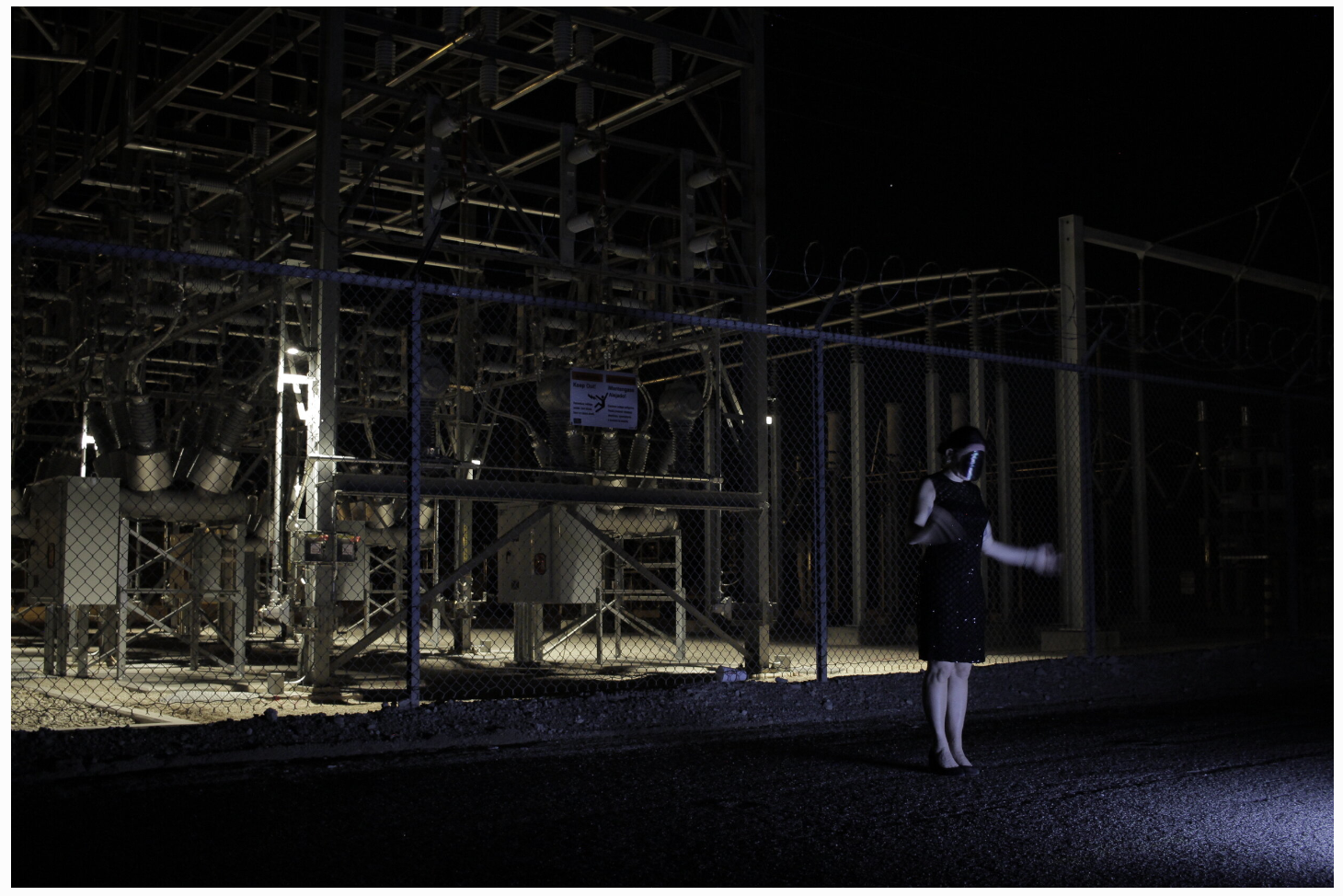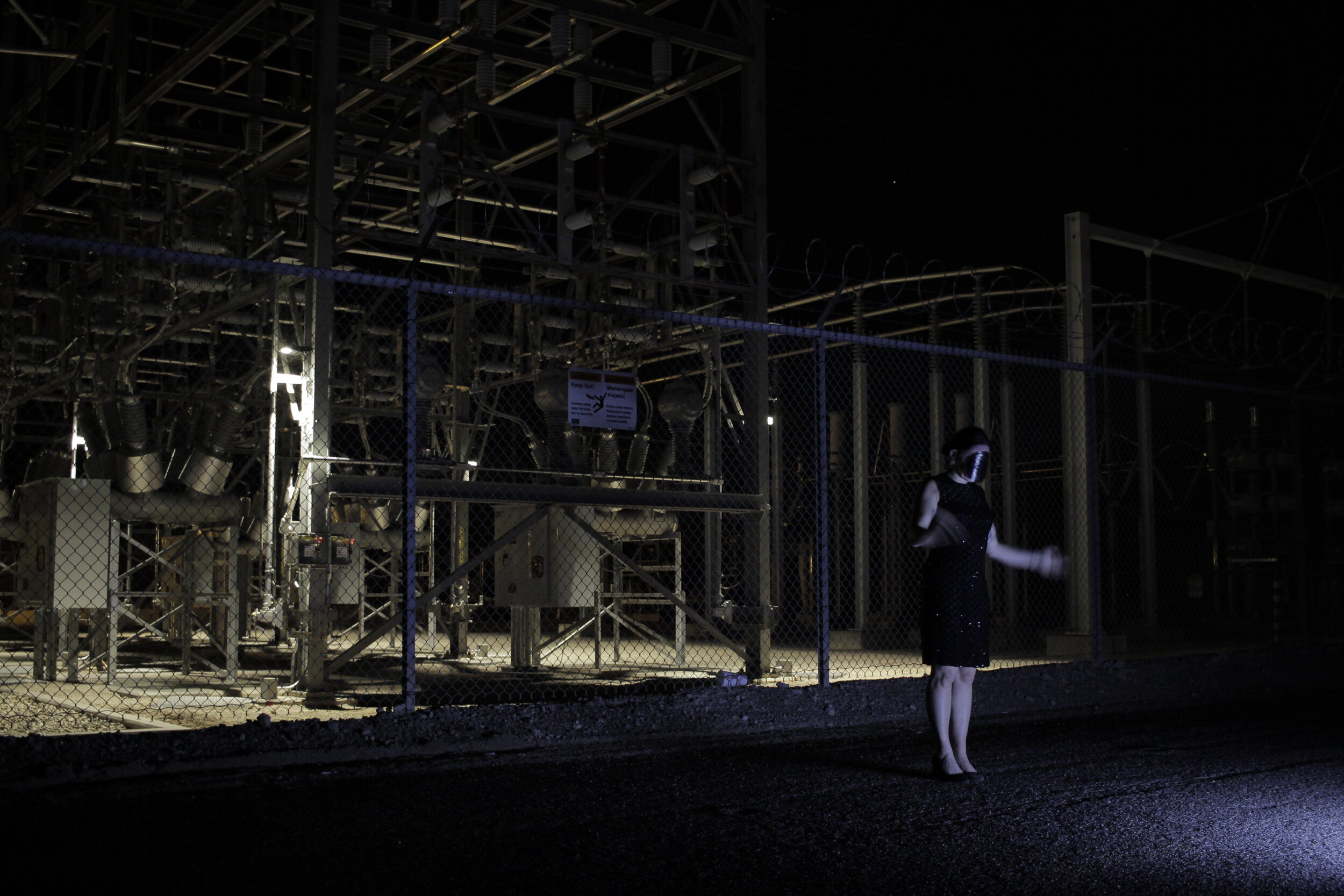Performing the Electrical or My Heart is an Electromagnetic Chamber: Scenographies of Power, Ecology, and Speculative Practice
P.h.D Dissertation and ongoing practice-led research
Centralized electrical grids are often referred to simply as power—access to power, reliable power, power outages. This language of power reflects a truth, that energy is power-full; from controlled lands, people, and waterways, to fossil fuels, mass production and digital data, electricity is a modern tool of globalized power. Performing the Electrical traces the histories and futures of electrical discovery and knowledge through cultural performances, socio-political assemblages, and the more-than-human world-making functions of energy-as-electricity. As doctoral research and ongoing creative work, this project seeks to transform how energy-as-electricity is perceived, and thereby to re-vision the impact that energy-rich relationships might have ecologically—in both the social and environmental senses of the word.
I use my scenographic sensibilities in combination with performance studies and energy humanities lenses to identify how energy-scapes form through social performances, material relations, and aesthetic/ritualistic interventions. This approach allows me to synthesize vastly different scales of energy-as-electricity performatives and spatialities and propose alternative framings which work towards decolonizing and re-feminizing energy-rich relationships. The research considers the way power flows, accumulates, and transforms through performance as embodied expression, practice and eventful doings of human and more-than-human agents. It asks: if place is practiced space (Henri Lefebvre), how can decolonizing and re-feminizing energy-rich relationships transform normative power relationships (or power geometries, as cultural geographer Doreen Massey refers to such globalized interconnections)—which are formed through electricity, technologies and colonial-capitalism? I link environmental racism and white supremacy to the legacy of energy dependence, colonial technologies, and aggressive acts of domination; of land, water, and people (in conversation with Walter Mignolo’s understanding of modernity and coloniality as two sides of the same coin). And, I ground this inquiry as an ecological intervention (both socially and environmentally) in order to investigate how performing with energy-as-electricity in our collective imaginations and quotidian interactions, can change the ways that power flows in the time of Capitalocene pandemics.
As acts of caring for one another and the Earth, the work proposes Mesmeric Interventions as dramaturgical turns which allow us to perform with energy-rich materials, differently. Performing the Electrical is a timely investigation that contributes a performative perspective to the energy debate and suggests that artist-crafted evocations are a necessary component to understanding and transforming our current social precarity. The work promotes speculative performances and material storytelling as tactics for feeling, sensing and growing more equitable, just, and desirable energy-rich relationships and futures.
Chapters
Performing the Electrical takes on four distinct topics-concepts, organized in my writing as the chapters of my dissertation. These concepts also frame ongoing studio, performative and material projects, which I call the Magnetic Chamber and which weave throughout my research; working dramaturgically to bind writing, material practice, and teaching methodologies. Please see Magnetic Chamber pages for more information.
In “The Theatricality of Land/scrapes: Gertrude Stein in the Lightning Fields” I examine Power, knowledge, and geography in relation to the American west. I extend Mignolo’s (2005) framing of modernity and coloniality as two sides of the same coin, to consider the theatricality of performing materials, in “nature” and as utilitarian processes of energy-as-electricity production and consumption. Moving between Stein’s feminist framing of electricity in relation to fascism, power, and knowledge and Walter de Maria’s Lightning Fields as a site to consider neo-colonial occupation of land and aesthetics, I come to find the concept of Land/scraping, a play of landscape and perception shared between the two works. Land/scrappers become performative concepts and prop-objects that reemerge in my practice led work. This chapter identifies the tension between how electricity performs in nature with how it is enacted as a utility, and challenges the distinctions/devisions between the two, setting the stage for those that follow.
In “Ecologies of the Imaginary and Fem Assemblages” I trace the history of western electrical knowledge as a series of assemblages and exhibitions made predominantly by White European men. I reconsider this knowledge-formation through notions of gender and orientation, working with Sara Ahmed’s Queer Phenomenology (2006). I then go on to propose alternative energetic assemblages by examining the artistic and speculative work of female artists. While there is an obvious archive of artists who work with electricity and energy, I locate more ontological questions through the work of Remedios Varo, Alice Aycock, Tania Candiani, Cassie Meador and Hito Steyerl. This site also works as a compass for the development of my practice-based inquiry, to help orientate me and the work towards partnerships and assemblages that draw new and more desirable futures into being. I explore Doreen Massey’s notion of Power Geometries as a visualizing tool for devising socially engaged, creative, and spatial work.
In “Batteries and Mobile Energy: When Electricity is Racist” I use four image archives, or performing scenographies to expand upon the relationships between colonial technologies, electronic waste, and environmental racism. This section attends to the creepy side of electricity which makes peoples, communities and ecologies subjects of power, through power. I channel Franz Fanon’s writing on the role of the radio in the French Algerian Revolution and the nexus between communication (radios), energy-as-electricity (batteries), and embodied tactics for transforming colonial technologies. The Battery also become a material meditation for my practice-based research. I spent over a year making different types of batteries. Working with clay, recycled metals, plants, fruit, and decomposing organic waste, these batteries function as speculative prop-objects that provide delicate electrical effect in Magnetic Chamber installations and performances.
In “Imagination and Speculative Space-Making: A Mesmeric Act to Re-Enchant Electricity” I form my final provocation, that notions of mesmerism, as an embodied form of sensing and relating to the energetic world, is a way to perceive caring for one another through energy rich relationships. I reframe mesmerism not as that proposed by Anton Mesmer in the 1700s but as a form of Earth-care that functions in and through energy relations. Mesmerism, as a historical site also provides an opportunity to examine the ways that “materiality” of gender and race worked simultaneously to discriminate and privilege those individuals who were sensitive to energy. In reframing mesmerism as intersectional sensing, knowing and communicating through the electrified ether, I interrogate new age-neoliberal modes of sustainability within globalized inequalities cultivated by energy relations. I ask; how can performing mesmeric healing be a way to aesthetically communicate new energetic relationships which diversify how energy as electricity is enacted through feminized and decolonized values, relations, and systems. Mesmeric rituals are both site interventions, quotidian practices and a solo interactive performance. These events use collaborative event-making, sound, image, text, installation and speculative performance to reframe energy as electricity as a way of healing the Earth; to read the Earth mind, to summon and confront the specters which haunt us, and heal through the electromagnetic ether.
As an epilogue to this research, I use a place orientation (Hann 2018) to return to the original questions of this project and articulate the ways in which event-making, speculative material relationships and performances can function as social and ecological interventions in place. I work with the site of the Grand Theatre, in Douglas, Az, which was stripped of its electrical infrastructure and abandoned at a time when energy rich materials out-valued collective and community space. As a geographic site located in the US/Mexico the Grand Theatre helps me illustrate how my research put into practice, as experiential learning, speculative design and scenographic methodologies has the potential for radical social and ecological transformation. The Grand Theatre is also the site of a future presentation of this work which would develop through community collaboration and applied theatre techniques. More information about the Grand Theatre can be found at www.bacaz.org.

